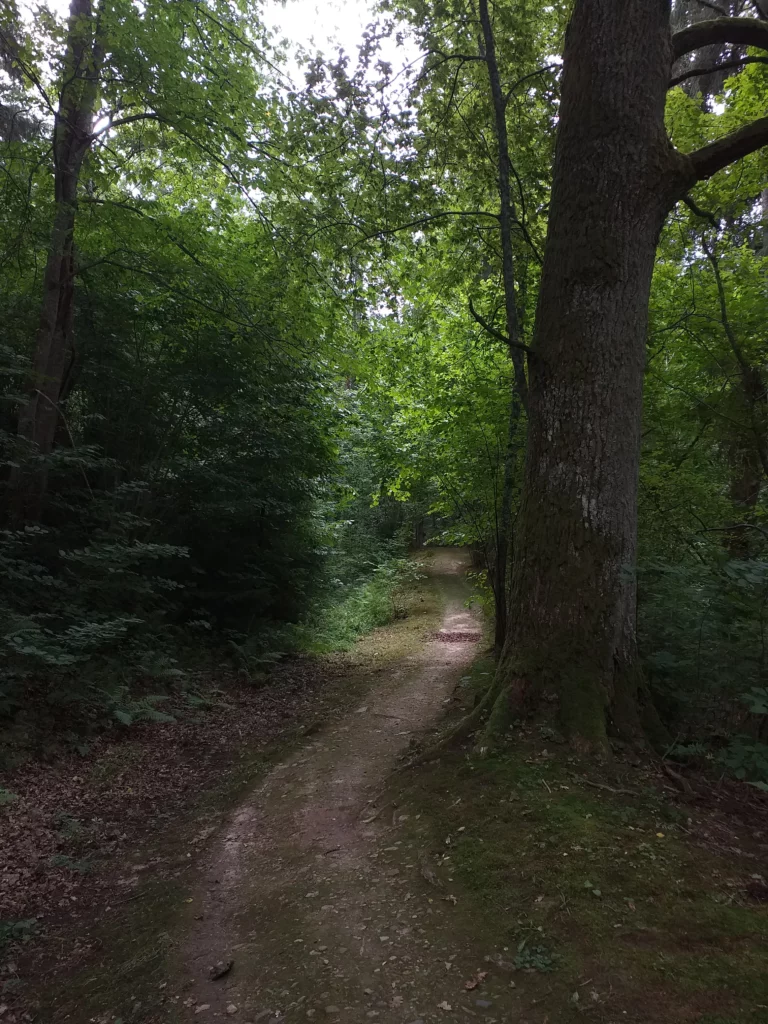The longest path to Folk Song Hill begins at the “Liv Bird” sculpture in Folk Song Garden. The Liv Path stretches from Folk Song Garden to Folk Song Hill, and it is 800 m long. People who walk down the path will hear birdsong and the wind, and they can look at the landscape that has been shaped by nature and people. Jāņkalns Hill is on the left side of the path, and to the right is the Rītupīte River, which collects water from Folk Song Garden and surrounding streams.
The beginning of the path runs along the location of an ancient road via which the Livs of Turaida accessed the Gauja River in antiquity. Across the Rītupīte, there is the small Skandinieku stream. Here we find a Devonian Era cliff with a small cave from which the stream flows. From there, there are steps leading up Folk Song Hill.
On the sides of the path are oaks, ashes, bird-cherries, hazels, woodbines, viburnum and other trees. Other plants which do well in the area include the fern, stone-crap, European wild ginger, meadow pea, brooklime, May lilies and other interesting plants. There are also various mushrooms, mosses and lichens here.
The Skandenieku stream
While helping to clean up Folk Song Hill in 1982, members of the folklore group “Skandenieki” found and cleaned up the cave and the stream. That is why it is known as the “Skandenieku stream.”
“Little water, little stone, they lived the life of the Sun” – that is what a Latvian folk song says. Turaida is full of subterranean waterways which try to break out to the surface in Folk Song Garden and Folk Song Hill. The wonderful water of the Skandenieku stream will be enjoyed by those who are thirsty after their hike down the Liv trail.
The Devonian Era sandstone cave is 3 m high and 6 m wide, and the length of the cave, from which the stream flows, is 6.5 m. This is the deepest cave at the Turaida Museum Reserve. The water from the stream is pure, and its temperature is always between 6 and 8º C. Mosses and lichen cover the foot of the cliffs, while at the top there are fragile ferns and other plants of various kinds.




